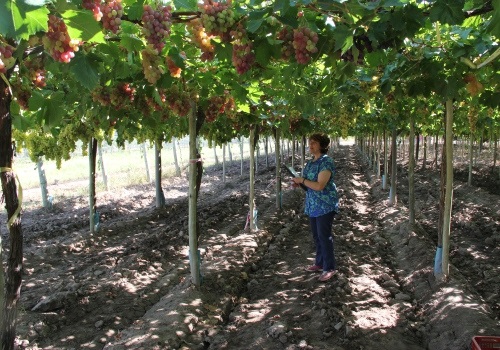Argentina: New table grape varieties developed for export

While table grapes are Argentina's seventh-largest fruit export crop with figures totaling 13,000 metric tons (MT) last year, this pales into comparison with volumes of the country's more well-known commodities such as pears and lemons. 
With new varieties, perhaps that number may rise. The National Institute of Agricultural Technology (INTA) has recently released four new varieties aimed at boosting the export sector in the provinces of Mendoza and San Juan, which account for 95% of the country's existing production.
Just over the other side of the Andes from Chile, these two provinces already have substantial wine industries but have not experienced the same fresh fruit export fame as their western neighbor.
INTA Mendoza breeding specialist Silvia Ulanovsky said the release of Sorpresa INTA, Serena INTA, DeliciaINTAand Fernandina INTA were the product of 15 years of research and development.
"The development of national varieties demonstrates technological sovereignty and for Argentine growers it represents a competitive advantage as now they won't have to pay royalties for plants," Ulanovsky said.
"The development of local cultivars, in addition to widening the diversity of varieties available for consumers, is an advantage for the growers because it involves plants that are adapted to the agri-climatic conditions and management in the cultivation zones."
She said the process for selecting the four varieties was rigorous, with 99% of the plants generated through crosses getting eliminated.
The varieties are characterized by meeting quality standards that demand seedless fruit, and they have a minimum size of 18mm.
Both Fernandina INTA and Sorpresa INTA are black varieties, which is on the whole uncommon in the Argentine table grape export space. Serena INTA is red and similar to Crimson Seedless but with an earlier harvest date, thus extending the country's production window.
The berries of Delicia INTA are pink with a moscatel flavor. Ulanovsky said its great advantage however compared to 'Moscatel Rosado' - a variety with a wide distribution domestically - is that it doesn't need pollinator varieties nearby.
INTA's Mendoza laboratory for post-harvest experiments also evaluated the behavior of harvested bunched to determine whether they were export-fit.
"The first results indicate they can be conserved in a cold chamber for a minimum period of 45 days, with admissible values in percentages of dehydration of the fruit," Ulanovsky said.
She said nine companies in the region had signed agreements to plant the varieties, which were open access cultivars.










































